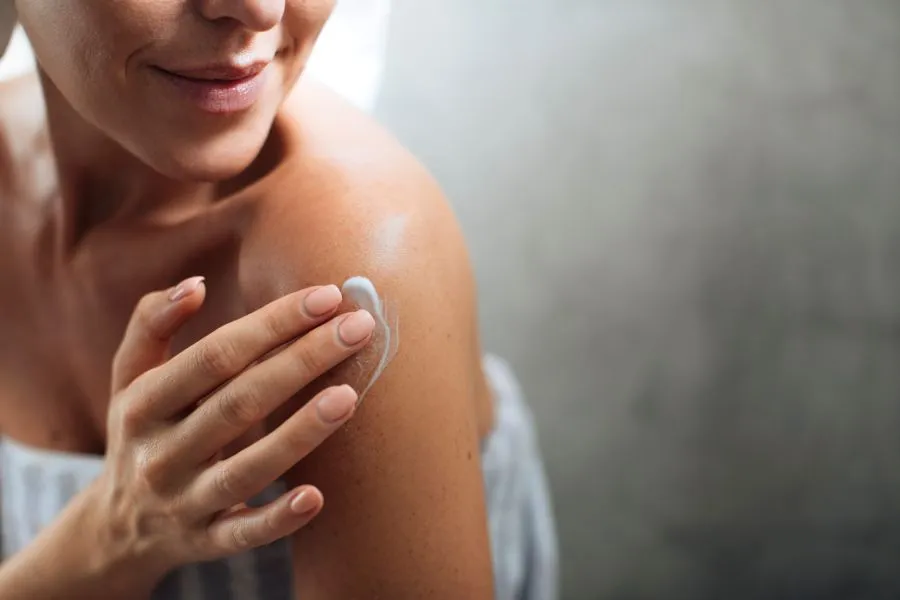Webinar preview: Univar and Dow transform active ingredient delivery
Key takeaways
- Silicone organic elastomer blends enable formulators to control active ingredient release and skin penetration while maintaining stability and sensory appeal.
- Volatility and polarity are key physicochemical factors that determine how actives are released, absorbed, and interact in cosmetic formulations.
- Future innovation in active ingredient delivery may rely on AI-driven personalization, microbiome-friendly technologies, and advanced encapsulation systems.
Developing cosmetics with effective active ingredients that penetrate the skin while maintaining a beneficial sensory profile comes with many formulation challenges. However, silicone elastomer gel technologies are unlocking new levels of product performance.
On October 15, Personal Care Insights will host a webinar with Dow and Univar to discuss how chemistry, formulation science, and consumer needs all intersect to create novel cosmetic solutions. The webinar will focus specifically on Dow’s silicone elastomer portfolio, namely the silicone elastomer blends (SEBs), the silicone organic elastomer blends (SOEBs), and the hydrophilic silicone organic elastomer blend (HSOEB).
Ahead of the webinar, we sit down with experts from Dow Personal Care: Jennifer Marques, global strategic marketing director, and Marc Eeman, senior technical service and development scientist.
“During this webinar, we will demonstrate how SEBs, along with a water-in-silicone emulsion format, can be strategically used to tune the release rate and skin penetration of active ingredients without compromising formulation efficacy,” Eeman tells Personal Care Insights.
“We will also show how SOEBs enhance formulation stability while preserving the sensorial elegance consumers expect, making them a powerful tool for developing high-performance, consumer-preferred skin care.”
Registration for the webinar is accessible for free here.
Volatility and polarity
Properties like volatility and polarity play a crucial role in how active ingredients in topical formulations are released, penetrated, and absorbed into the skin.
“The efficacy of active ingredients in personal care formulations hinges on a deep understanding of their physicochemical properties — particularly volatility and polarity — which govern their release and absorption into the skin,” says Eeman.
 Dow and Univar explore next-generation active delivery. Volatility refers to how easily a substance evaporates. Substances that evaporate quickly can help drive other ingredients into the skin by creating a concentration gradient. These substances are often used as penetration enhancers or to deliver a burst effect.
Dow and Univar explore next-generation active delivery. Volatility refers to how easily a substance evaporates. Substances that evaporate quickly can help drive other ingredients into the skin by creating a concentration gradient. These substances are often used as penetration enhancers or to deliver a burst effect.
Polarity affects how well an active ingredient interacts with the skin’s layers. Non-polar, lipophilic active ingredients can diffuse more easily through the stratum corneum intercellular lipid matrix. Hydrophilic active ingredients often rely on penetration enhancers to maximize their efficacy.
Polarity also affects how the active ingredient behaves in a formulation, specifically its solubility and compatibility with other functional ingredients.
“SEBs, offer a dual advantage: the tunable options, changing cross polymer chemistry and carrier fluid, allows tailoring to the active physiochemical properties and leading to enhanced bioavailability of actives through improved compatibility and controlled release, while simultaneously delivering the elegant sensory profile consumers expect,” explains Eeman.
“These systems enable formulators to overcome the stratum corneum barrier, optimize targeted delivery, and maintain stability, all without compromising on texture or skin feel. As the industry evolves, integrating advanced delivery systems and encapsulation technologies will be key to balancing performance with consumer satisfaction.”
Silicone backbone
SOEBs are particularly effective in enhancing the delivery of active ingredients in skin care due to their dual structural and functional properties.
“Today’s consumers are increasingly drawn to skin care products that promise real results, especially those powered by active ingredients. But efficacy alone isn’t enough — sensory experience plays a pivotal role in product acceptance. That’s why brands must invest in the right active delivery systems,” says Marques.
Silicone elastomers offer the characteristic silky feel and non-greasy texture for consumer experience. They also improve the spreadability of the product on skin, ensuring a uniform distribution of the active ingredients across the skin and enhancing their absorption.
“What distinguishes our silicone elastomers is not only their offering both functional performance and a refined sensory profile, but also their regulatory compliance. These innovations ensure that consumers enjoy both visible benefits and a pleasurable application experience, driving loyalty and satisfaction, while enabling brand owners to meet regulatory requirements,” continues Marques.
“This synergy between active ingredients and our silicone elastomer portfolio is something we’ve consistently demonstrated over the years.”  SOEB technology boosts skin penetration and feel.
SOEB technology boosts skin penetration and feel.
Consumers demand high-performance
Advanced silicone systems, such as silicone elastomer blends, continue to gain traction for their distinct consumer experience.
“The growing consumer demand for high-performance skin care is amplified by influencer-led education and social media demonstrations, especially around actives like vitamin C and niacinamide,” says Marques.
She highlights that the rising interest in efficacious active ingredients was evident during its formulation lab session at In-cosmetics Global 2025, where the company collaborated with formulators to create a water-based serum containing 10% cosmetic actives.
Eeman tells us that the ultimate goal in active delivery is to overcome the skin’s natural barrier.
“Depending on the physicochemical properties of the active ingredient, it may require the use of more sophisticated delivery systems. Most recent innovations include encapsulation technologies (liposomes, cyclodextrins), nanotechnologies (solid lipid nanoparticles), or smart delivery systems that release the active ingredient upon specific stimuli (pH),” he says.
“Traditional technologies such as penetration enhancers and polymeric carriers are also considered when developing innovative cosmetic formulations as they can effectively improve both the release and absorption of the active ingredients.”
Advanced silicone systems are chemically inert, and form a breathable film, reducing the risk of clogged pores. Their feel and matte finish allow them to be easily formulated into leave-on face care, sun care and color cosmetics.
Eeman predicts that AI, personalization, and the importance of the skin’s microbiome will influence the future development of advanced delivery systems.
“For improved targeted delivery, it is crucial to demonstrate that the current and future technologies respect the skin’s microbiome. Another important element is to leverage AI and data-driven formulations. Personalized cosmetic products based on consumer data, skin type, and environmental exposure will revolutionize the active ingredient delivery in personal care.”
Formulation challenges
Achieving an effective delivery of an active ingredient is not simple. Several factors must be considered when developing a formulation chassis.
 Advanced silicones enhance skin care performance. “The formulator needs to ensure that the active ingredient is stable and bioavailable in the final formulation. The bioavailability of an active ingredient is notably reduced if the active shows a high affinity with other ingredients of the formulation. The formulator often considers the solubility parameters of the ingredients to select those that promote an effective delivery of their active ingredient to the skin,” says Eeman.
Advanced silicones enhance skin care performance. “The formulator needs to ensure that the active ingredient is stable and bioavailable in the final formulation. The bioavailability of an active ingredient is notably reduced if the active shows a high affinity with other ingredients of the formulation. The formulator often considers the solubility parameters of the ingredients to select those that promote an effective delivery of their active ingredient to the skin,” says Eeman.
Solubility, stability, volatility, and polarity affect how actives behave in a formulation and interact with the skin. Hydrophilic actives that do not penetrate easily into skin are sometimes modified with lipophilic moieties to improve their skin absorption profile.
Other techniques, such as encapsulating the active ingredients, are also proposed to overcome the stratum corneum’s barrier function.
“Not all active ingredients are intended to reach the same skin compartment at the same time. The formulator needs to consider the target of the active ingredient to ensure its delivery to the right location at the right time. Targeting can be improved using technologies such as liposomes or polymeric carriers,” adds Marques.
“The sensory of the final formulation [is also vital]. Balancing efficacy with consumer experience is a constant trade-off. Even the most advanced active ingredients can fail to deliver results if the formulation feels unpleasant, does not absorb well, or leaves unwanted residues on the skin.”
“This webinar is another opportunity to demonstrate how our partnership with Univar empowers formulators — not only by giving them access to high-performing ingredients like Dow’s silicone elastomer blends, but also by providing deep scientific, formulation expertise, and lab capabilities,” she concludes.














